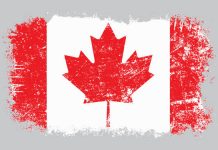In focus today
This afternoon, US May PPI will provide markets with further sense of tariff-driven cost pressures. Yesterday’s lower-than-expected CPI report showed that firms have remained cautious with passing through the rising costs. Read more in Global Inflation Watch – Price pressures moderated in May despite the trade war, 11 June.
In Norway, the Q2 Regional survey will be published today. Growth picked up sharply in Q1 and was much stronger than expected by the respondents in the regional survey from March. However, the postponement of rate cuts, global trade tensions and a gradual decline in oil investments may have dampened expectations. Hence, we expect that growth expectations for the next quarter are roughly unchanged at around 0.4%, which should be in line with Norges bank’s expectations from the Monetary policy report in March.
In Sweden, we will receive the PES unemployment data this morning. The labor market has shown signs of improvement, suggesting that the worst may be behind us.
Economic and market news
What happened overnight
Trade negotiations are set to advance, as Trump announced plans to send letters to trading partners within the next week or two outlining specific unilateral tariffs and telling countries what the deal is. As the tariff pause nears expiry, Trump expressed willingness to extend the deadline beyond 8 July to finalise trade discussions with 18 significant trading partners, including India, South Korea, Japan, and the EU. Yesterday, Trump posted that he had made a deal with China under which rare earth minerals would flow again, and tariff rates will be 10% on the US and 55% on China. However, the tariff numbers do not add up since tariff rates do not seem to have been part of the negotiations this time around and thus have not changed compared to mid-May. The actual rates are probably around 40% on China and 15-20% on the US when including all tariffs, including the ones imposed in the first trade war and under Biden.
What happened yesterday
In the US, May inflation figures fell short of expectations, with headline inflation rising only marginally by 0.1% m/m compared to April, against consensus of 0.2%. Aggregate inflation edged up to 2.4% y/y, slightly below expected 2.5%. Despite soaring consumer inflation expectations, inflation has been slow to react to Trump’s tariffs, exerting only modest pressure on consumer prices. Core inflation remained stable at 2.8% y/y, contrary to predictions of a slight increase to 2.9% y/y. Overall, it was a soft print suggesting that underlying inflation remains weak, prompting the market to respond with lower rates and a weaker USD.
Equities: Equity markets fell yesterday, despite receiving a clearly positive data surprise in the form of a softer-than-expected US CPI report. Initially, equities responded positively to the inflation numbers, but sentiment turned in the evening amid renewed geopolitical tensions. The rotation in market leadership reflects this shift: defensives outperformed cyclicals, while the standout sector was energy, rising 1.2% in global benchmarks and 1.5% in the US. In the US yesterday, Dow 0.0%, S&P 500 -0.3%, Nasdaq -0.5%, Russell 2000 -0.4%. Overnight, Asian equities are trading slightly lower, while European futures are down close to 1% and US equity futures are also pointing lower.
FI and FX: Soft US CPI triggered a sharp decline in Treasury yields and broad-based USD weakness. Both yields and the USD took another leg lower while equity futures went red after President Trump announced plans to set unilateral tariff rates within two weeks. US10Y at 4.40% vs 4.50% prior to the CPI. EUR/USD above 1.15 for the first time since April and USD/JPY back at 144. USD/Scandies dropped ten figures while EUR/SEK and EURNOK were stable around 10.97 and 11.56, respectively.












